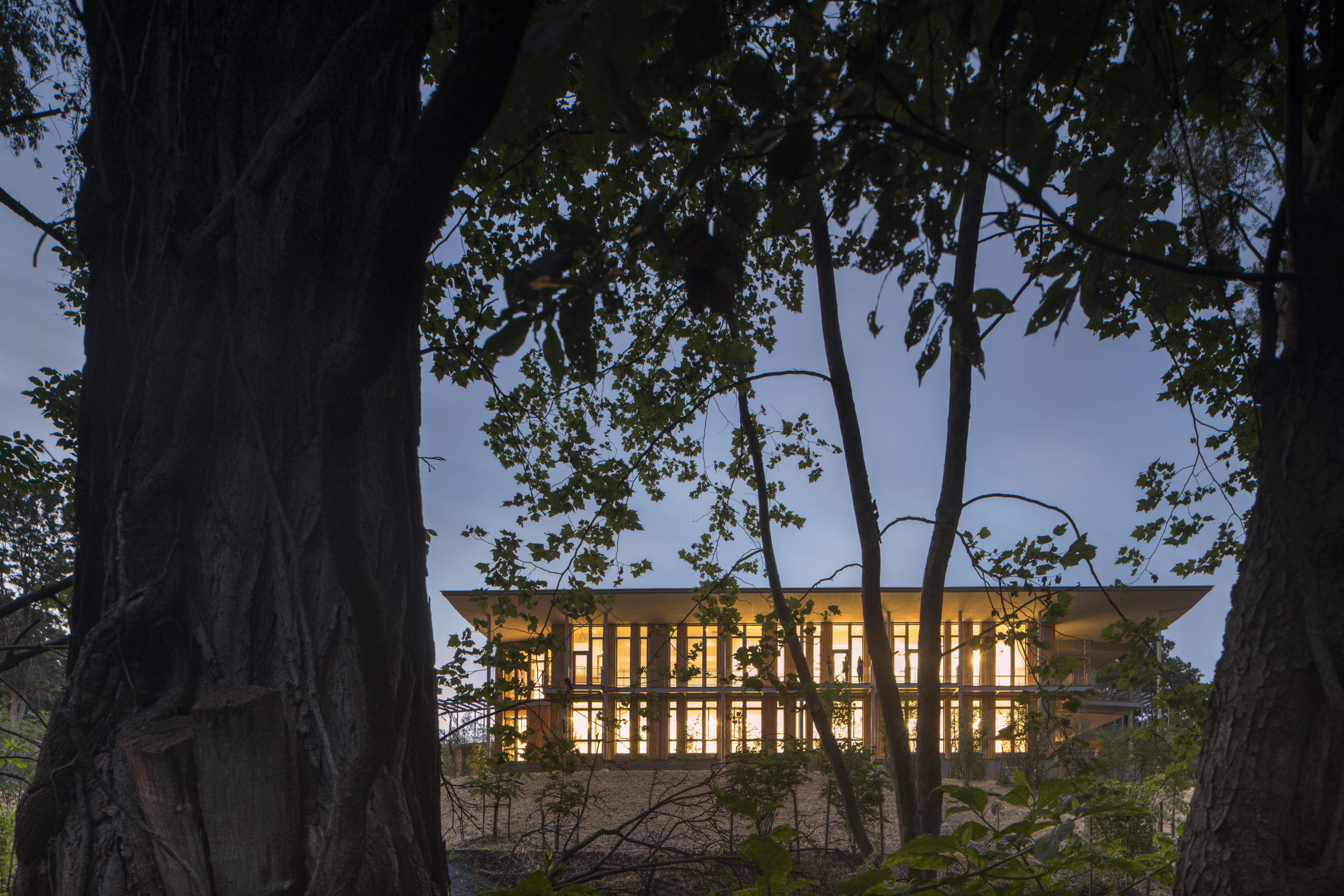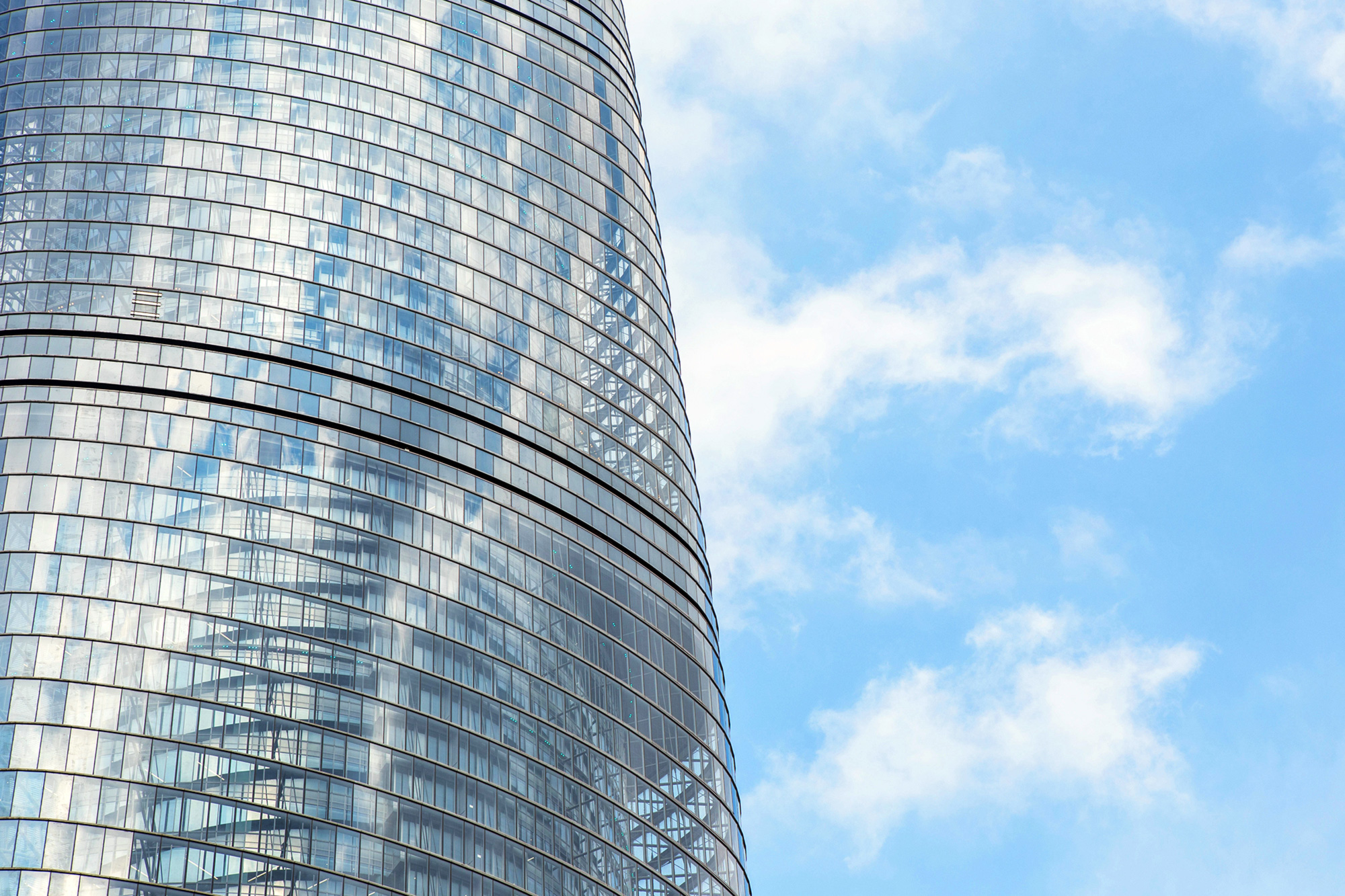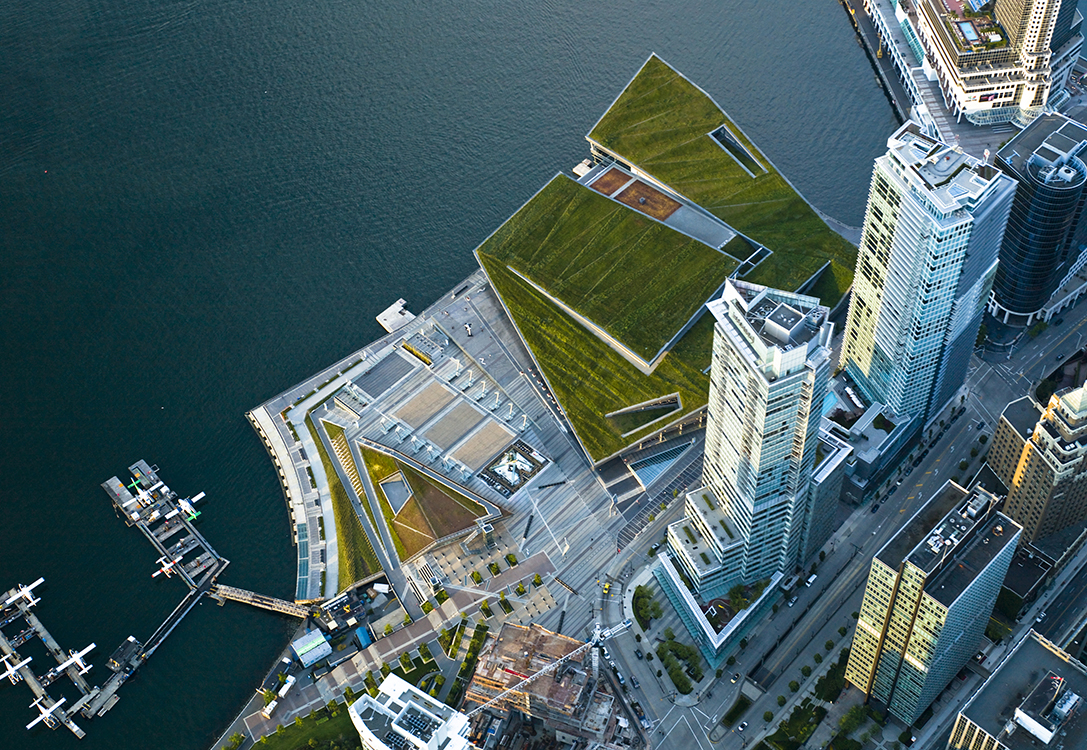Last chance: The 14th Architizer A+Awards celebrates architecture's new era of craft. Apply for publication online and in print by submitting your projects before the Final Entry Deadline on January 30th!
The environmental impact of the building industry is a challenging subject that holds significant weight in the architectural community. As we understand more about our predecessors’ past failings to protect our planet, there is an explicit drive to ensure the negative impact of development is minimized as one of the ways to ensure our future.
The U.S. Green Building Council has advocated for efficiency, sustainability and cost-effectiveness in community development since 1993. As the demand and necessity for greener buildings surges, their certification program, Leadership in Energy and Environmental Design (LEED), has become the most widely recognized and trusted certification for green building rating. LEED-certified buildings are coveted and with varying levels to accomplish; achieving platinum status is the ultimate ambition of many of today’s conscientious architects. To help inspire the planet-friendly projects of the future, we’ve put together a list of some of the most innovative, intriguing and exciting LEED certified buildings of recent times.


One Vanderbilt by Kohn Pedersen Fox Associates, New York, NY, United States
LEED v3 Platinum and LEED v4 Gold
One Vanderbilt sits in the top 30 tallest buildings in the world. It is a building that has transformed the Grand Central District of its construction, and alongside the Chrysler Building and Empire State Building, One Vanderbilt stands proud as a futuristic landmark of the New York skyline.
Achieving both LEED v3 Platinum and LEED v4 Gold certifications, the contemporary skyscraper has a host of green features. The tower was built using steel rebar made of 90% recycled content features cutting-edge technologies, including a 1.2-MW cogeneration plant and 90,000-gallon rainwater collection systems. The advanced facade system incorporates high-performance glazing to regulate heating and cooling throughout the building.


Olympic House by 3XN, Lausanne, Switzerland | Jury Winner + Popular Choice, 2020 A+Awards, Architecture +Sustainability
LEED v4 Platinum
Olympic House is recognized as one of the most sustainable buildings in the world. With its shape inspired by an athlete’s movement, Olympic House combines the highest standards in architectural design with a holistic approach to sustainability, considering every aspect of the design, build and coordination process. Located near Lake Geneva, the building uses heat pumps that repurpose water from the lake to provide renewable energy for the building.
From its inception, the architectural team focused on decreasing the project’s negative impact while increasing sustainability, including the demolition of the building that originally stood in its place. Energy, water, thermal efficiency, acoustics, materiality and effect on the local economy were all considered and evaluated for the best solution before, during and after construction as a continued commitment to the environment.

 Frick Environmental Center by Bohlin Cywinski Jackson, Pittsburgh, PA, United States
Frick Environmental Center by Bohlin Cywinski Jackson, Pittsburgh, PA, United States
LEED 2009 Platinum
The Frick Environmental Centre was designed as a joint venture between the City of Pittsburgh and the Pittsburgh Parks Conservancy after the park it now sits in place of was destroyed by a fire in 2002. Encompassing almost four acres of development, including various outdoor spaces, wildlife and education tools, the three-story center occupies the same footprint as the park’s former education center to minimize ecological disruption. It is a haven for experiential learning and public engagement.
The building itself relies on several passive heating and cooling strategies, beginning with a high-performance, highly insulated exterior wall cladding — a locally-sourced wood that does not require sealant or staining. The firm also incorporated many passive strategies, like roof overhangs, natural ventilation and a red light/green light system that lets occupants know the best time to open windows. Photovoltaic shading, located in the parking lot, provides much of the energy. Underground water-collection cisterns, low-flow fixtures and runoff collection are just some of the water initiatives used to increase efficiency.

 The Bullitt Center by The Miller Hull Partnership, Seattle, WA, United States
The Bullitt Center by The Miller Hull Partnership, Seattle, WA, United States
Living Building Status
When it first opened in 2013, The Bullitt Center was designed to be the greenest commercial building globally. Today it produces more energy than it uses and has net-zero impact on the environment. Backed by its mission to protect the Pacific Northwest’s natural environment and promote healthy and sustainable ecosystems, the Bullitt Foundation — the proprietors of the groundbreaking six-story commercial office building — wanted their new headquarters to be constructed to the highest levels of sustainability.
The Center is powered by a 244 kW rooftop solar array, composed of 575 PV panels. All rainwater is collected in basement cisterns and is treated to drinking standards while also supplying all the water needs of the building and its occupants. The building is a timber structure of FSC certified glulam beams and dimensional lumber. This wooden structure sits atop a ground-source heat exchange system made up of 26 wells, each reaching a depth of 400 feet. In addition to its low consumption and renewable energy sources, the materials used throughout the building were also screened for compliance with the Materials Red List to restrict toxic chemicals.


Vancouver Convention Centre by LMN Architects, Vancouver, Canada
LEED v4 Platinum
Designed by Seattle-based LMN Architects, the Vancouver Convention Centre is the first double LEED Platinum-certified convention center in the world. The expansive waterfront building come urban district straddles land and sea, combining walkways, public spaces and plazas with retail, art installations and event facilities.
As part of the building’s sustainability endeavors, a living roof was introduced, spanning over six acres, making it the largest in Canada. The unique roof acts as an insulator, reducing heat gains in the summer and heat losses in the winter. The roof is also home to four beehives with European honey bees that help to pollinate the 400,00 plants and grasses. A restored marine habitat was built into the foundation of the West building, which has resulted in the water quality of the area being improved dramatically, and a large variety of sea life returning to the location. Water treatment systems and natural light harnessing add to the sustainability and efficiency initiatives of the building.

 Shanghai Tower by Gensler, Shanghai, China
Shanghai Tower by Gensler, Shanghai, China
LEED v4 Platinum
Soaring 1, 300 feet (632 meters) above the financial heart of China, Shanghai Tower is the second tallest building in the world. The striking structure features high-speed elevators, is home to the world’s highest observation deck and claims to be the world’s greenest skyscraper. The building achieved LEED Platinum status on its full opening in 2016.
Despite being plagued with inoccupancy, floor plate issues and fire safety concerns, the tower boasts a total of 43 different sustainable technologies. These technologies include renewable energy sources extensive landscaping to help cool the interior, while the building’s unique twisting shape helps improve the building’s wind resistance. These technologies have allowed the building to reduce its total energy consumption by 21 percent, slash its carbon footprint by an estimated 37,000 metric tonnes yearly, and save US$58 million in material costs.
Last chance: The 14th Architizer A+Awards celebrates architecture's new era of craft. Apply for publication online and in print by submitting your projects before the Final Entry Deadline on January 30th!

 Frick Environmental Center
Frick Environmental Center  Olympic House
Olympic House  One Vanderbilt
One Vanderbilt  Shanghai Tower
Shanghai Tower  The Bullitt Center
The Bullitt Center  Vancouver Convention Center West
Vancouver Convention Center West 


